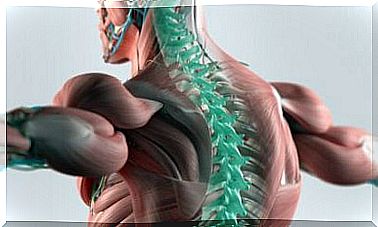Stimulus Control In Addiction

Stimulus control for addictions is one of the fundamental techniques for achieving the difficult, but possible, goal of giving up a destructive habit.
As we say Dead the beast, dead the venom . Although it may sound simple, this is essentially the goal of stimulus control techniques. They aim to eliminate stimuli that can trigger addictive behavior.
Although in this article we focus more on addictions, stimulus control can be achieved in the context of any destructive habit.
As we expressed above, the technique itself is quite simple. Just make changes on the triggers to avoid falling into addictive behavior.
Conditions for successful stimulus control
However, the fact that it is simple does not imply that it is easy to achieve results with this technique. The therapist and the patient must be able to do it correctly. On the one hand, the therapist must show empathy. On the other hand, the patient must demonstrate his commitment. To obtain fruitful results, these 2 conditions must be met.
First of all, the therapist must be empathetic with the person in front of him. And this without losing touch with reality. Not all desirable stimuli can be removed or changed, so alternatives must be found.
On the other hand, the motivation and conviction of the patient are essential. He must show that he wants to change. If the person is, according to the model of Prochaska and Di Clemente, in the pre-contemplative stage or even in the contemplative stage, it will be difficult for him to carry out effective control of the stimulus. The patient must have made the decision and the commitment to apply the guidelines established by his therapist.

The means of effecting stimulus control
There are many ways to achieve stimulus control. This ranges from the direct elimination of the stimulus that precipitates the response to making physiological changes in our body. Either way, the therapist will need to make sure the patient is able to do this. He will also have to verify that the treatment is feasible.
This last point will therefore depend very much on the case and the resources available to the person. Indeed, social support, self-control and motivation, among others, will be important.
In this sense, we know that it is much more efficient to work on the first links of the behavioral chain. For example, if a person is emotionally addicted to another person but needs to drink alcohol before calling them. In this case, it is better to work on drinking behavior rather than call avoidance behavior.
Here are some ways to perform the stimulus control technique.
Eliminate trigger stimuli to allow better control
This option is mainly used when the addictive behavior is severe enough. In addition, it is used when the person lacks self-control. For example, in a situation where the patient tries to quit smoking but every time he drinks coffee he feels the uncontrollable urge to smoke a cigarette.
In this case, the therapist may advise him to eliminate the coffee completely. Indeed, thus, he will have much more control of himself. Moreover, he will also avoid the cigarette associated with this situation.
Perform stimulus control: decrease trigger stimuli
We would practice this form of stimulus control when the patient has some self-control. In addition, it takes place when we cannot radically eliminate the trigger stimuli.
For example, in a case where the patient feels that each time he goes out into the street, a very strong impulse to purchase or acquire objects appears. In this case, it is more realistic to ask the patient to leave their credit cards at home and walk away with less money. It would be unrealistic to tell him to cancel his card or go out with no money at all.
Delay behavior
Another fairly effective way to deal with addictive behavior is to commit to delaying it. Sometimes we feel a strong urge to go to the fridge and have that chocolate that seems to be calling us.
In this case, we have to make the decision not to go, at least for the next 20 minutes. At the same time, it is important to have an alternative activity to distract us. If this commitment is honored, there is a good chance that after this wait, the momentum has lost its intensity.
Perform stimulus control: make changes at the physiological level
Finally, another option is to make changes in our own organism. It also helps to avoid falling into the addiction trap. There is, for example, a case of stimulus control for severe cases of alcoholism. It is the taking of the drug Disulfiram or Antabuse. This is because the action that the drug exerts in the body consists in suppressing the enzyme which is responsible for the metabolism of alcohol (aldehyde dehydrogenase).
Therefore, the patient will have an extremely unpleasant reaction to the substance, with vomiting, tachycardia, sweating, etc.
This last example is an extreme case of stimulus control. Now here is another illustration of using stimulus control with changes occurring at the physiological level. For example, shopping after lunch, without feeling hungry, to avoid buying high-calorie products.

Conclusions on the fight against addictions
Stimulus control in addictions is a very effective technique if performed well. However, it is difficult to achieve total abandonment of the substance with this technique alone. Therefore, stimulus control should be combined with other techniques to optimize the chances of success.
In the area of addictions, certain techniques may be compatible with stimulus control. For example, cognitive techniques. Cognitive technique aims to change any mistaken beliefs that the patient may have about their problem. On the other hand, the patient can also work with other techniques, such as relaxation or mindfulness, to better cope with withdrawal.










